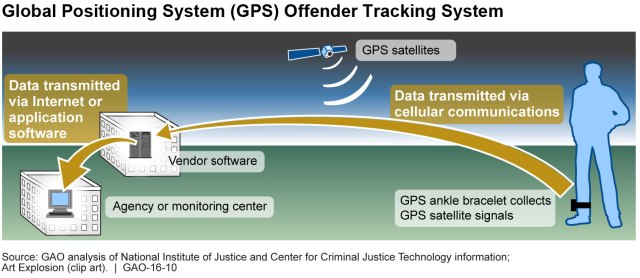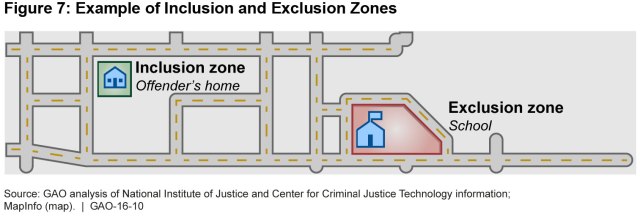Tracking Criminals with GPS
 (Excerpted from GAO-16-10)
(Excerpted from GAO-16-10)
- Location accuracy, both indoors and out. For example, systems should be accurate within 10 meters 90% of the time if there are no obstructions.
- On-demand location within 3 minutes of a request.
- Zones, or geofencing, designating certain areas an offender may be restricted to, like home or work, or prevented from, such as a victim’s home or a state border.
 (Excerpted from GAO-16-10)
(Excerpted from GAO-16-10)
- Alerts for when an offender tampers with or removes the tracking device, violates zone rules, or begins losing the GPS signal due to poor coverage or a low battery.
- Optional requirements such as detecting GPS signal jammers.
- Questions on the content of this post? Contact Diana Maurer at MaurerD@gao.gov.
- Comments on GAO’s WatchBlog? Contact blog@gao.gov.

GAO's mission is to provide Congress with fact-based, nonpartisan information that can help improve federal government performance and ensure accountability for the benefit of the American people. GAO launched its WatchBlog in January, 2014, as part of its continuing effort to reach its audiences—Congress and the American people—where they are currently looking for information.
The blog format allows GAO to provide a little more context about its work than it can offer on its other social media platforms. Posts will tie GAO work to current events and the news; show how GAO’s work is affecting agencies or legislation; highlight reports, testimonies, and issue areas where GAO does work; and provide information about GAO itself, among other things.
Please send any feedback on GAO's WatchBlog to blog@gao.gov.
